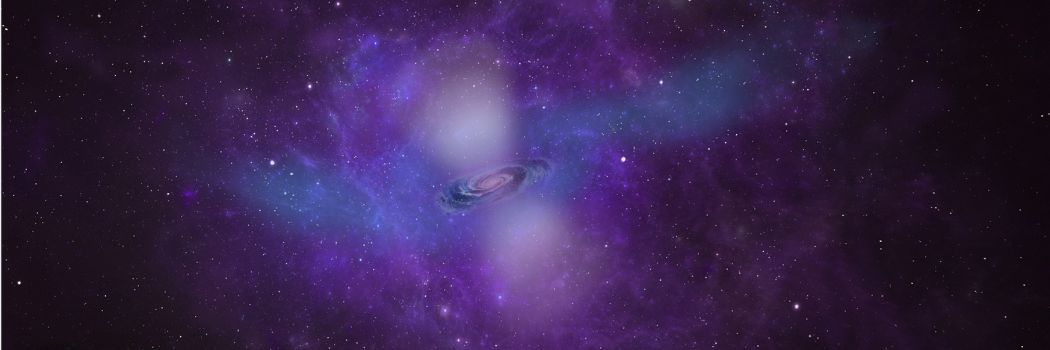
We're part of an international team of astronomers who have been able to take a photograph of the halo of gas around a galaxy for the first time.
The image shows that the gas around galaxies reaches out much further into space and that they have an impact on a much larger area than previously thought.
The research could help us to understand how galaxies build mass over time.
It could also have implications for how different galaxies interact and how they might impact each other.
Because the reach of galaxies appears to be greater than previously thought, it's possible that the gas surrounding our own Milky Way and its nearest neighbouring galaxy, Andromeda, is already overlapping.
Deep imaging techniques
The research looked at the circumgalactic medium – the gas surround – of a star-bursting galaxy 270 million light years away.
Using new deep imaging techniques, the astronomers detected the cloud of gas glowing outside of the galaxy 100,000 light years into space, as far as they were able to look.
This compares to the galaxy's starlight – what we would typically view as the galaxy's disc – which extends just 7,800 light years from its centre.
I was part of a team that used Keck, a telescope in Hawaii with a 10m mirror, to observe the gas (known as the circumgalactic medium) surrounding a star-bursting galaxy 270 million light years away. Since the circumgalactic medium is extremely faint, capturing the first image of it involved observing what appeared to be a blank patch of sky next to the galaxy for a really long time, collecting enough data to see its signal. It was really exciting when we could see the gas that we expected to be there!
Researchers are now seeing where the galaxy becomes part of its surroundings and eventually where it joins the cosmic web and other galaxies.
Their study could also be another piece in the puzzle of how galaxies evolve, how they get their gas, how that is processed and where that gas eventually goes.






